Organics, what to do?
By Dane Campbell and Evan Williams
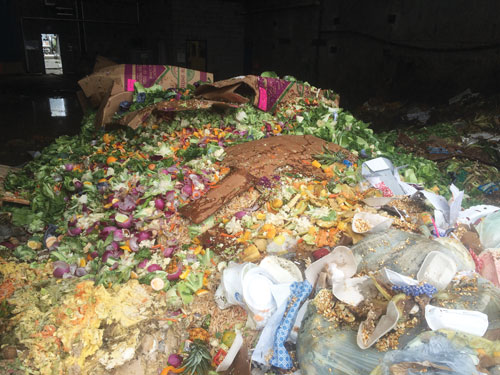
Images courtesy of Cambridge Companies and T3CHCOMP.
The subject of recycling, processing and handling organic waste has been a leading-edge subject inside the waste industry for many years. Roughly 35 percent of the weight being hauled and dumped in landfills is an organic fraction. There is a focus to reduce the amount of organic waste from landfills, mostly due to methane pollution. Many companies in the U.S. want to help this situation and have many different ideas, but without much experience, it can be difficult to select the right solutions. There is not one solution to fit all situations, and solutions can be radically different depending on the material and the location. The common challenge with all solutions is figuring out how to plan and operate a financially viable business around the organic waste. In most cases, the business cannot remain viable without being profitable with only hauling and tip fees.
Organic waste material can come in many different forms, and it is essential to understand all types ahead of time. Even more important, build your business solution on a specific type of organic material coming in, and what value it has afterward.
Types of Organic Waste Material Streams
The waste industry has used many loose terms, with little technical definitions for organic waste, when compared to the scrap industry’s IRSI material classifications or the plastics industry’s chemically defined polymers. There is often confusion between haulers, processors and end-users dealing with organic waste. It is even more challenging to understand for new companies or existing ones trying something new. A common phrase in the waste industry is, “you can only work with what the material will give you.” In the case of waste organics, the inbound material is split into one of the three categories: Source Separated Organics, Green Waste and Municipal Solid Waste.
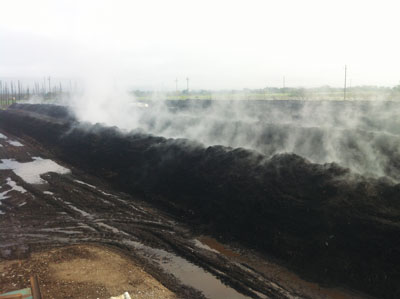
Source Separated Organics
Source Separated Organics (SSO) is a term loosely used from clean fruit and vegetable discards, to landscaping debris with food scraps. Both can be very different when it comes to processing and end markets. SSO has received the lion share of the public’s attention and fanfare over the past eight years. However, it is the lowest volume, as a percentage, of all waste organics being collected and handled. Then why is there so much attention? There are a few reasons:
1. The lowest level of contamination compared to other organic waste streams
2. Demands increased cost for pick up, hauling and processing
3. Highest level of moisture, thus heavy and highest density
4. Most advantageous organic waste stream for anaerobic digestion
5. Easiest to make into alternative nutrient by-products, such as animal feed
6. Continued efforts to keep out of landfills
The most common contamination found in SSO is hard plastics, soft plastics and inert items such as glass. However, rarely are all three at the same level from each specific source. Soft plastic, or film, is the most common issue often coming from grocery packaging and waste collection bags. It weighs the least, but looks the worst. Hard plastic contamination most often comes from schools, fast food, and cafeterias in the form of plasticware or single-serve containers. Glass contamination most often comes from homes, bars and restaurants, where tableware and single-serve bottled beverages are conventional. Knowing where the material comes from, or even better, planning your inbound collection routes, can be the first step in getting ahead.
Since SSO is the least contaminated waste organic waste stream, it lends itself to having the highest potential of valuable outgoing products. The easiest and most common is a traditional composting process. A less common option is an anaerobic digestion process to capture methane gas. The gas can be used for a variety of energy-saving options.
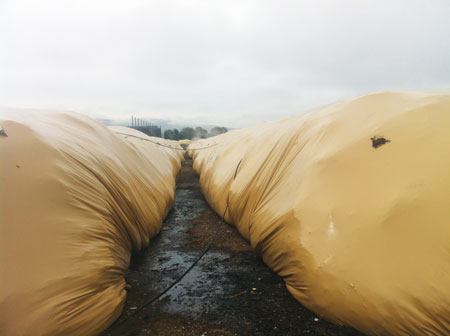
The newest ventures using SSO is to harvest the nutritional value in the material, at a much smaller scale. Maybe the “nano” of the waste industry’s future? When evaluating organic material at a particular scale, it can have a scientific definition via standard FDA protocols.
Green Waste
Green Waste is the second level of organic waste, generally composed of tree, leaf and grass debris. However, a growing number of communities are allowing food scraps into the same collection bins, particularly with residential markets. Again, these two sources of green waste organic material come with different types of contamination. Commercial landscapers often have agricultural plastics, landscaping bags, rocks, bricks and pressure-treated lumber. Residential green waste bins seem to have more hard plastic contamination from single-serve containers and yard toys.
Traditional green waste is and has been for many years, the most “recycled” organic waste stream with a vast majority going through a composting process, then resold at a positive value. There are many successful composting operations in the U.S. with a massive amount of equipment experts and support organizations such as the U.S. Composting Council. Many established green waste-to-compost companies have expanded their operation to accept SSO since the incoming volumes are substantially lower. The SSO inbound can command a higher tip fee, and the additional food waste can increase the value and energy of the compost. However, it is always a balance depending on the contamination and local regulations surrounding SSOs that has not usually been an issue with green waste-to-compost operations.
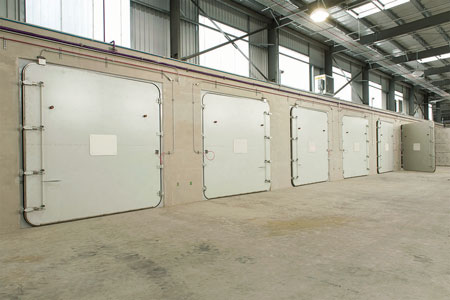
Municipal Solid Waste
Municipal Solid Waste (MSW) is the most substantial volume and weight, waste stream in the U.S. Inside this waste stream is a 30 to 40 percent organic fraction, making it the leading amount of organic waste. A majority of communities in the U.S. only provide residential and commercial customers with a single MSW garbage bin that goes straight to a landfill.
MSW is another loose term that can have a wide range of variance. For instance, if the region has a successful recycling program, much less recoverable materials are in the MSW, which equates to a higher percentage of organic waste. Another MSW variance has to do with the demographics of the region. The amount and type of organic food scraps vary on income levels. There are also differences between material collected from a residential neighborhood, multi-family living areas, and commercial urban and commercial rural.
With increasing awareness of methane pollution from landfills and newer technologies for recovering commodities, there has been a significant movement to process MSW between pick up and the landfill. The city of San Jose, for instance, mandates this. These MSW processing facilities have the one common challenge, the 2″-fraction, which can be up to 40 percent of the inbound material. This faction is very organic-rich, but contamination levels are the highest compared to SSO and green waste. Due to this, finding financial positive outboard material is a very tricky business.
Organic Waste Processing Options
Regardless of the type of inbound organic waste material, the two most common processes are to burn the material for heat or have it decompose for compost or gas production. Another option, rare but getting more obtainable, is harvesting the nutritional value in organic food waste.
There are multiple methods of burning organic waste to obtain energy. The most basic example would be incineration, often called Co-Generation, as the material burns with additional inputs such as natural gas. As the organic fraction burns, the heat is captured and used to make steam. The steam can power many different equipment items, but most common is a steam turbine integrated with a generator for making electricity. Many power plants in the U.S. do this successfully, and most of them produce a minimum of 10 megawatts of electricity and some plants substantially more. However, capital costs and operational costs are extremely high. These projects take the longest to plan for and typically operate for 20 years or more.
Composting
The most common option for organic waste material is to put it through a composting process that changes the biological chemistry of the material. The essential business of composting is maintaining a process over time with a given amount of space. The amount of space needed is directly proportional to the amount of material sourced. Most often, organic waste material handled and stored into windrows. The organic material holds more than 45-degree angle of repose, so slightly taller than wide. Tall windrows help maximize land space use. The process is a FIFO, first in first out, with a timeline that includes a prescribed level of maintenance such as watering, turning and temperature monitoring. Different material streams and geographic locations due to outdoor environments require different types and levels of maintenance. The general planning of a windrow composting operation includes 80 to 120 days and most often targeted at 90 days.
The amount of time for the open window composting process is reduced by adding airflow or even some catalyst agents to speed up the process. In many cases adding both positive and negative airflow in static piles not only reduces the compost process time, but also requires less turning maintenance. The aerated static pile composting process can reduce compost time up to 40 percent. There is an increased cost of equipment and operation costs, but with less time, less land space required. Many existing composting sites upgrade to an aerated static pile process when more material, than land available for open windrows, is sourced.
To further reduce the organic waste composting process, a more controlled and sealed environment, is required. Some systems store the organic material inside a large bag or sack, controlling moisture, airflow and temperature by external sources. These systems require minimal civil work, and most aspects of this solution are portable. A more elaborate and expensive solution is called in-vessel composting. This sealed room or tunnel most commonly appears near anaerobic digestion operations. When using these sealed environments and highly controlled variables, organic waste turns into compost in as little as 30 days. Another advantage of composting inside an enclosed environment is the control of odors. The costs per yard of compost for in-vessel composting is the highest, but has the shortest process timeline and lowest risk of odor issues.
The biggest challenge with all the composting methods is the ability to generate a clean and saleable compost product at the end of the process. The more contaminated the organics waste coming into the process, the harder it is, which is why it is so tricky to use organic waste from MSW successfully at composting operations. Many traditional composters have had to put strict restrictions on the type of material or clients that can come into the processing yards. Even with the cleanest organic waste stream, such as SSO, clean, and uncontaminated compost products are challenging to reach.
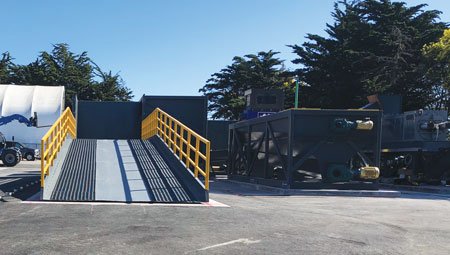
Anaerobic Digestion
The past decade includes a massive amount of effort and technology for turning organic waste into energy. The process is called anaerobic digestion, and by capturing the methane gas, many forms of power are available. There are many different processes from companies in the same space, all having their secret recipe. However, the amount of methane gas per ton of input is generally close between the three technology options. They are dry digestion, wet digestion and plug flow. These digestion processes operate with many of the same composting biology and chemistry steps, which are in a highly controlled sealed environment. The objective is to obtain maximum gas production by setting all parameters to optimum biology attributes.
The dry digestion process provides the least amount of gas per ton input compared to wet and plug flow—roughly 1 megawatt of electricity per 60k tons per year. However, it can handle the most considerable amount of contamination and has the lowest cost to operate, specifically low maintenance. This is the primary reason why this digestion method is best suited for MSW organics in the U.S. Dry anaerobic digestion (AD) does use a large amount of moisture, in the form of percolate. Still, the material itself does not flow—the material acts like a sponge that being continually washed with percolate. As the moisture flows through the resting organic waste, it picks up the microbes that emit methane gas. The microbes flow with the percolate through a closed-loop process. The overall process time for a batch of material in a sealed tunnel can range from 18 to 30 days. The methane gas process is not linear, and often a vast majority of the material’s energy is recovered under 22 days. Therefore, AD plants minimize in-tunnel retention time. It becomes a balance of gas recovery versus time in the digestion tunnel. If the digestate is planned for an outgoing compost product, it has more value with still some energy left in the material versus close to inert. A dry digestion system typically includes material storage tunnels and a fluid handling system. Other parts of the AD process can include automatic tunnel feeding systems, biofilters, generators, gas upgrade kits and even waste heat collection systems.
The wet digestion process provides the most amount of gas per ton input, but is the most sensitive to contamination. The continuous process, once started, which can take from one month to six months, goes on its own with minimal material handling and maintenance. It can yield 1 megawatt of electricity with only 20k tons a year of SSO type material. The wet digestion process has proven successful for many years in handling animal waste or wastewater at a sewage plant. In both of those cases, the material is exceptionally constant. In the wet digestion process, inbound material is made into a slurry and pumped through pipes and into different chambers. In certain parts of the process, the microbes are the most active and give off the maximum amount of methane. However, dealing with a daily waste organic material stream, that can vary from the type of material to the level of contamination, is often a significant risk. If the wet digestion process falls out of specification, the entire process must be shut down, emptied and started up again, which is not a viable solution for the standard waste industry.

A plug flow anaerobic digestion system combines the benefits of dry and wet digestion methods. It can yield power outputs per ton very close to a wet digestion system, but it is able to accept a high solids ratio and contaminated materials. This process costs the highest per ton in both capital costs and maintenance costs. The plug flow digestion process is continuous as material flows through a large pipe, similar to a dry digestion tunnel, with mechanical assistance. As the material flows through each section of the tunnel, it goes through the necessary biological steps needed for methane production. During the process, percolate is added and drained off to a separate reservoir, much like a dry digestion system. However, the material keeps moving and flowing, thus removing the need to batch load and unload digestion tunnels. Being a continuous process, it is also susceptible to the process falling out of specifications, which affects gas output and could possibly require a shutdown.
Food Waste to Food
The newest approach for processing organic food waste is to harvest it for nutritional value. All food is based on energy and measured in calories. Evaluating to an even closer level would be to measure the three main groups of energy the calories are in—carbohydrates, proteins and fats. Each one has a specific value to a specific market and can be substantially more than compost or methane gas. However, it is a more complicated process and requires a much more significant investment. The process begins much like any organic recycling company would do; secure the contracts for the material and set up a collection. Next, a local processing site must accept the material in a safe and repeatable method that reduces labor and maintenance items. The material enters the first step of processing machinery to recover the correct materials and process them into a slurry that is ready for storage or transport. Deleterious or off-spec material would be removed and considered residue. The receiving and pre-processing stations could be much smaller operations distributed around one master processing center that is more like a food processing plant versus a recycling plant. Most of the equipment for this comes from the food processing equipment industry. These systems are typically made from stainless steel, have wash down capabilities, and have an electrically compliant control system. These features are all quite different from a typical recycling operation. It is at this location where the final nutritional harvesting occurs. The most common desired output is a prepared nutritional value material that can be used as a food source for animals such as dogs, pigs or fish. Therefore, it is vital to know the market objective and demand well ahead of a new project, as there is already a massive market existing not using organic waste materials.
One such example of this is a facility that is currently operating in Santa Clara, CA for Sustainable Alternative Feed Enterprises, Inc. (SAFE) (www.forktofeed.com). The SAFE system revolutionizes the manner in which food waste is handled and processed. The SAFE system not only overcomes a host of problems that have long plagued the waste industry, it also addresses the concerns behind food scrap recycling mandates. The complete system works optimally within implemented strict SSO programs collecting and processing food scraps separately from all other components of the waste stream. However, the system’s design can successfully operate in programs where contaminates are in excess of 50 percent. The system uses the following three steps:
1. SAFE patented equipment is used to facilitate the collection, and transportation of food scraps separately, minimizing non-food contamination.
2. SAFE extraction (pre-processing) equipment converts incoming food waste stream into a slurry while expelling non-foods such as paper and plastics. Specifically designed to integrate into an existing transfer station or Material Recovery Facility (MRF). The location is considered a SAFE “spoke.”
3. The slurry is transferred to a regional production facility, or “hub,” in sealed tanker trucks. The production facility houses SAFE liquid/solid separation, drying and processing equipment in a feed production environment. The end product is then converted into an additive that can be used in the production of various animal feeds or treats.
Organic Waste Processing Constants
Working with organic waste material for soil or gas energy has been completed for thousands of years. The number of inventions and new machines to aid these past 20 years have been incredible. Currently, there are no wrapping steel deck screw screens and machines using hypersonic waves to pulverize inert material to sand. However, it is wise to keep the focus on the repeatable constants in the business operation first, then working with an expert for optimization technologies that meets current demands and is flexible enough to work through the equipment’s asset life.
There are three categories of constant operational activities for the processing of organic waste material—sourcing the material contracts and hauling, front end infeed system and a back end prepares to ship system. The process and equipment to successfully haul, infeed and outbound preparation are all readily available from several different markets. There are vast differences in machine quality and we recommend working with the people who know the machines with the organic material the most.
Another constant to improve upon is the daily work schedule, which should try to meet modern standards such as food processors or microelectronic manufacturing plants that strive for 24/7 operation at greater than 90 percent OEE. The garbage truck collection and drop off might not be constant, so a system infeed and outbound area should have proper storage and dosing bunkers that are system controlled.
Organic Waste Output Options
Each possible organic processing output, from pure compost to CNG, requires its own specialized set of equipment or systems. This field of technological advancements is rapidly growing and must be evaluated more heavily than outdated experience. Compost and MSW processors are doing things with equipment that were not available 10 years ago. There has been a considerable surge inside the past three years regarding new technologies to process organic waste materials. Many of them from companies not inside the current waste processing equipment markets.
When trying to make compost from SSO and green waste, contamination is the toughest hurdle. The contamination has increased and changed to the point that older processes are not as effective. Compost material specifications, such as in California, make it even harder to sell. A common practice is to purchase a new machine, then maybe add some people to increase organic fraction purity from 85 to 95 percent. However, when the clean specification calls for a 0.5 percent contamination limit, it is not as simple as adding one more machine, which is a common expectation of processors who have been doing the same methods for many years. It is a matter of evaluating the entire process for a longer-term investment plan.
A standard processing question is when to remove contaminants from the incoming organic fraction—before the composting or AD process, or after. The answer is that both and advanced operations have already embraced this. Pre-sorting is most effective when the material is on conveyor belts versus ground sorting, but there is a recognizable cost for the equipment. Front end contamination removal is the best for soft film plastic contamination. It is much easier to remove one large mulch bag before size reduction, versus removing hundreds of small plastic film.
However, hard plastics and glass are more commonly removed when all products are sized the same and flowing off the end of the post compost process conveyor. For optimum performance of any sorting machine, a size ratio of 4:1 or better is good to reach 90 percent contamination removal without losing too much of the valued product. Loss of good base valued product is a double harmful because not only is there the loss in salable product revenue, but removal is also another. A good beginning question to start evaluating an organics processing operation is understanding the total tonnage inbound and what is the split of saleable outbound versus outbound residue.
When planning for an anaerobic digestion solution for organic waste, it is essential to begin studying the type, amount and consistency of the material throughout a full seasonal year. Anaerobic digesters are not a flexible solution in many ways. If inbound loads are going to vary, make sure the backend gas or power output can accept the variances. If there are strict power contracts with the local utility, irregular waste streams might not be the right solution. Therefore, finding ways to use the gas, heat, and electricity on your site is the best step forward. Other essential focus items for AD systems are controlling odors, so items like biofilters, bladder sealing vessel doors, and regular air exchanges are some of the necessary protocols.
Improving the Weak Link
Much like building a unique race car or custom home, the entire organics business operation is always about improving the weak link. If companies are not improving performance annually, they will fall behind or become irrelevant. The state of the organic waste processing industry now has more public attention than ever before. With this new attention comes a more significant amount of modern technology. This technology leap is a risk for some and a springboard for others.
A simple way to judge the success of a business is its financial well-being. The same goes for understanding the level of investment in new technology solutions. What is the percentage of annual revenue or profit used for engineering new solutions? Listening to equipment salespersons or trade show presentations is only a small part of it. There must be a more in-depth understanding of or investment into equipment and how a system is supposed to operate. Small upfront engineering investments have a much quicker rate of return once the upgrade is operational. Having the right team members is essential.
The world is also growing and changing faster, so solutions and systems must consider five to 10-year investment plans, not two to three years. Robustness and flexibility of equipment in the collection means, infeed front ends to accept inbound organic waste materials, and outbound material preparation back ends, is mandatory for long term success. It is not a question of if the organic waste material will change, only when, and how your operation can manage it. | WA
Dane Campbell is a design engineer with 27 years of experience with the highest level of quality, and sophistication involving processing equipment and systems, both mechanically and electrically. In 2007, he began his waste processing experience with a massive MSW system, and has continued to this day, developing deep knowledge of MSW, green waste, SSO, compost and anaerobic digestion inputs and outputs. At T3CHCOMP Incorporated, he is a technology advisor to owner operators and consultants regarding waste processing challenges. Dane can be reached at (541) 971-6828 or e-mail [email protected].
Evan Williams is a Design Project Manager at Cambridge Companies (Griffith, IN), a design-build firm working with the waste industry for more than 25 years. During this time, more than 150 solid waste design-build projects have been completed including new build, repairs, upgrades and/or modifications at transfer stations, recycling centers/MRFs, hauling companies, landfill facilities, office buildings and more. Cambridge continually monitors the industry to determine any new needs, changes or improvements that will benefit their clients and improve their design-build solutions. Evan can be reached at (219) 972-1155, via e-mail at [email protected] or visit www.CambridgeCoInc.com.
